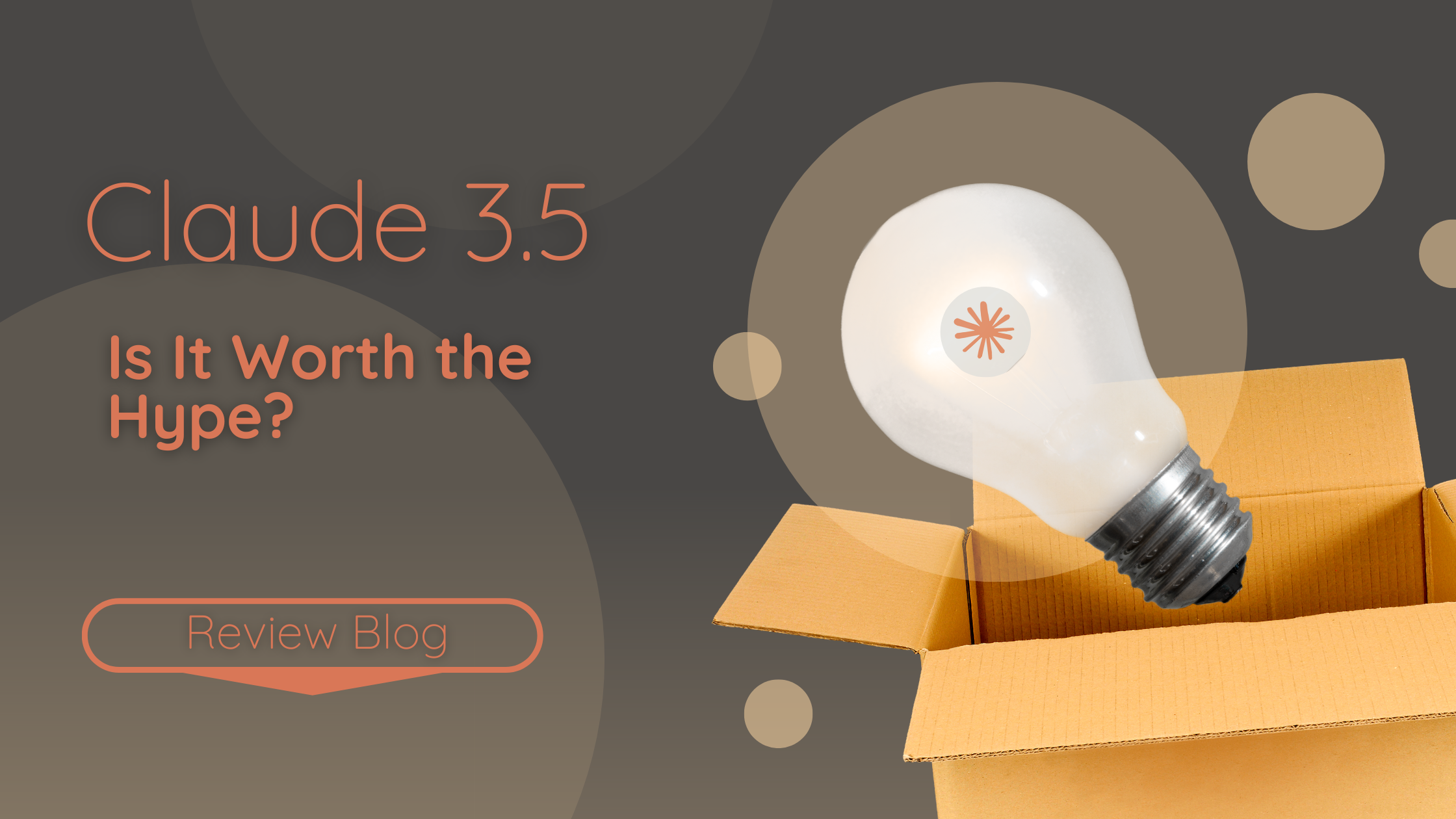Claude 3.5 Sonnet is a new AI model from Anthropic. It came out in early 2024 and it’s really impressive. This AI can do all sorts of things, from writing code to creating art. It’s much smarter than older AIs and can even beat humans at some tasks.
What is Claude 3.5 Sonnet?
Claude 3.5 Sonnet is part of a group of AIs called the Claude 3 family. Here’s how it fits in:
- Claude 3 Haiku: The fast, simple one
- Claude 3.5 Sonnet: The middle one (this is the new one)
- Claude 3 Opus: The big, powerful one
Sonnet is special because it’s both fast and smart. It’s good at lots of different jobs.
How to Use It
You can try Claude 3.5 Sonnet in a few ways:
- On the website cloud.anthropic.com
- On an iPhone app
- Through special computer code (API), if you’re a developer
It’s free to try, but you can pay for more features.
Key Features and Capabilities
Coding Skills
Claude 3.5 Sonnet showcases impressive coding abilities that go beyond simple script writing. It can create complex, fully functional games and interactive visualizations with minimal prompting.
Game Development:
- Snake Game: Claude can generate a complete, playable Snake game in Python with just a single prompt. The game includes all essential features like score tracking, collision detection, and game-over conditions.
- Tetris: With only two prompts, Claude can create a fully functional Tetris game, complete with different shapes, rotation mechanics, line clearing, and scoring.
- 3D First-Person Shooter: Remarkably, Claude can even generate a basic 3D first-person shooter game similar to Doom, including a map, sound effects, and enemy AI, in just three prompts.
Interactive Visualizations
- Particle Cloud Simulation: Claude can create an interactive 3D particle cloud using Three.js, with user controls for particle count, speed, and mouse interaction affecting particle movement and camera position.
- Neural Network Visualization: It can generate an animated diagram of a neural network, showing data flow through the layers and node activations changing based on input.
These coding capabilities demonstrate Claude’s understanding of complex programming concepts, game mechanics, and 3D rendering techniques.
Content Creation
Claude excels in generating various types of written content, adapting to different styles and purposes.
- Blog Posts and Articles.
- Can create well-structured, engaging blog posts on a wide range of topics.
- Adapts tone and style to suit the target audience.
Capable of including relevant details and maintaining a logical flow of ideas.
- Product Descriptions: Generates persuasive product descriptions highlighting key features and benefits.
- Social Media Content: Creates catchy and engaging social media posts for various platforms.
Data Analysis and Visualization
Claude demonstrates strong capabilities in transforming complex data into accessible, visually appealing formats.
Infographic Creation:
- Can analyze lengthy, text-heavy documents (like financial reports) and extract key information.
- Transforms this data into visually appealing, interactive infographics.
- Includes relevant charts, graphs, and visual elements to enhance understanding.
Interactive Presentations:
- Generates complete slide presentations on given topics.
- Includes appropriate content, styling, and even animations.
- Can refine presentations based on user feedback, adjusting colors, adding images, or modifying content.
- Problem-Solving and Reasoning.
Claude 3.5 Sonnet shows advanced problem-solving and reasoning capabilities across various domains:
- Can break down complex problems into manageable steps.
- Applies logical reasoning to arrive at solutions.
- Demonstrates ability to understand and solve math problems, though it may not yet surpass GPT-4 in this specific area.
- Can engage in analytical discussions and provide well-reasoned arguments on diverse topics.
Multi-step Workflows and Task Completion
One of Claude’s standout features is its ability to handle complex, multi-step tasks efficiently:
- Can understand and execute long-term goals, breaking them down into smaller, manageable steps.
- Maintains context throughout a conversation, allowing for iterative improvements and additions to a project.
- Can switch between different aspects of a task (e.g., coding, design, content creation) within the same conversation.
- Offers suggestions for improvements or additional features as it completes tasks.
Additional Notable Features:
- Large Context Window: With a 200k token context window, Claude can handle and process very large amounts of information in a single conversation.
- Multilingual Capabilities: Demonstrates strong performance in tasks across multiple languages.
- Code Explanation: After generating code, Claude offers to explain or break down the code for better understanding.
- Ethical Considerations: Claude is designed to avoid harmful or unethical outputs and can discuss the ethical implications of AI use.
These capabilities make Claude 3.5 Sonnet a versatile tool suitable for a wide range of applications, from software development and content creation to data analysis and complex problem-solving. Its ability to handle multi-step tasks and maintain context throughout long conversations sets it apart as a powerful AI assistant capable of tackling complex, real-world challenges.
Performance Benchmarks
Claude 3.5 Sonnet has set new standards in AI performance, outshining its predecessors and rivaling industry leaders. When compared to previous Claude models, including Claude 3 Opus, Sonnet demonstrates significant improvements across various benchmarks. It operates at twice the speed of Claude 3 Opus while maintaining superior performance in most tasks.
In comparison with GPT-4 and other leading models, Claude 3.5 Sonnet holds its ground and often excels. According to benchmarks like LiveBench, Sonnet outperforms GPT-4 in areas such as reasoning, coding, and mathematics. For instance, in reasoning tasks, Sonnet scored 70 compared to GPT-4’s 48, showcasing a substantial leap in capability.
Sonnet particularly shines in coding proficiency, setting new industry benchmarks. It demonstrates exceptional ability in generating complex, functional code with minimal prompting. Its multilingual capabilities are also noteworthy, showing strong performance across various languages.
Technical Insights
One of Claude 3.5 Sonnet’s standout features is its expansive context window of 200,000 tokens. This allows the model to process and retain information from much longer conversations or documents, enhancing its ability to handle complex, multi-step tasks.
While specific details about Sonnet’s architecture are limited, Anthropic has revealed some insights into their training methods. The model benefits from innovative training techniques designed to enhance its logical reasoning skills. This includes providing the model with targeted feedback during training to improve specific competencies.
Interestingly, Anthropic has incorporated AI-generated data in Sonnet’s training. This synthetic data, when clean and high-quality, can significantly enhance the model’s performance and knowledge base. The use of AI-generated data is an emerging trend in AI development, allowing models to learn from a broader range of information beyond what’s available on the internet.
Anthropic has also hinted at architectural tweaks in Sonnet’s design, though the exact nature of these changes remains undisclosed. These improvements, combined with the enhanced training data and methods, contribute to Sonnet’s impressive capabilities.
User Experience
Claude 3.5 Sonnet offers a user-friendly interface that makes it accessible to both AI experts and novices. The cloud-based platform allows for easy interaction with the model, with a clean, chat-like interface for inputting prompts and receiving responses.
One of the standout features of the user experience is the Artifacts feature for code visualization. This allows users to see generated code and its output side-by-side with the conversation, making it easier to iterate and refine coding projects without switching between different environments.
The model’s ability to maintain context throughout a conversation enables users to easily iterate and refine outputs. Users can provide feedback, request changes, or ask for expansions on previous outputs, and Sonnet can incorporate these requests seamlessly into its responses.
Limitations and Considerations
Despite its impressive capabilities, it’s important to consider some limitations of Claude 3.5 Sonnet:
- Potential for Hallucinations: Like all AI models, Sonnet can sometimes generate inaccurate or fabricated information, especially when dealing with very specific or obscure topics.
- Ethical Considerations: The use of such advanced AI raises ethical questions about data privacy, potential biases in the model’s outputs, and the broader societal impacts of AI.
- Need for Human Oversight: While highly capable, Sonnet’s outputs should still be verified by humans, especially for critical applications or when dealing with sensitive information.
Conclusion
As AI continues to evolve at a rapid pace, Claude 3.5 Sonnet serves as a prime example of the potential of these technologies. It offers an exciting opportunity to explore the cutting edge of AI capabilities.
As we look to the future, it’s clear that models like Sonnet will play an increasingly important role in shaping how we interact with and leverage artificial intelligence in our daily lives and work.


